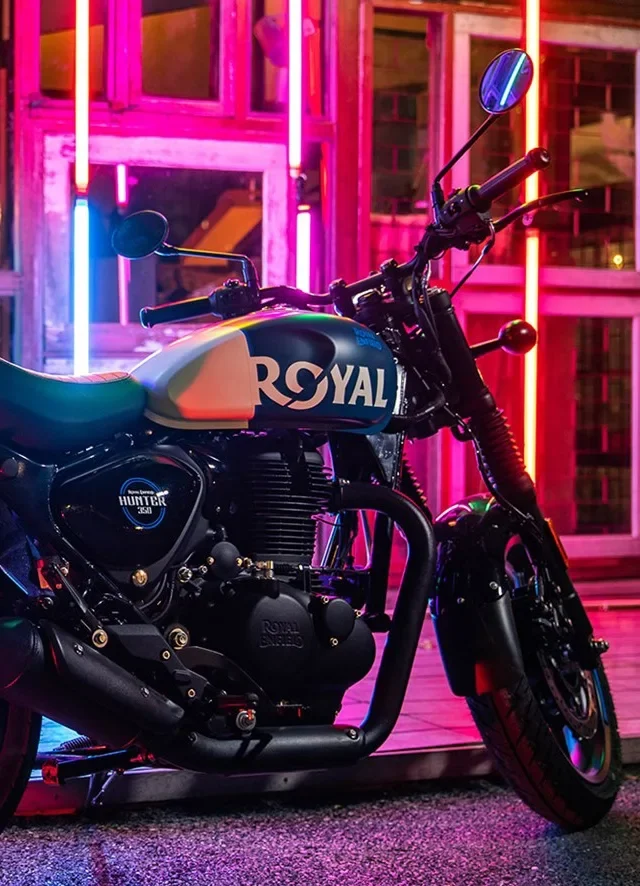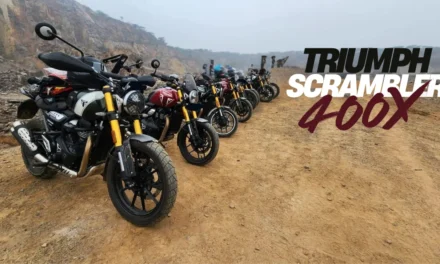It’s 7:30 AM in downtown Austin, Texas. Cars are gridlocked, tempers are flaring, and I’m sitting atop my Royal Enfield Hunter 350, grinning like a kid who just found the secret exit in a maze.
This bike promised retro charm and city-friendly agility—but does it actually work as a daily rider in America? After 6 months and 3,000 miles of commuting, grocery runs, and the occasional “why not?” detour, here’s my say.
1. City Traffic
The Hunter’s superpower: urban agility. Weighing 181 kg (399 lbs), this bike navigates traffic like a moth around a porch light. Lane-splitting in LA? Easy. Squeezing into parking spots tighter than skinny jeans? Done.
“It’s like riding a bicycle—if bicycles had a sexy exhaust note.”
But here’s the catch: the clutch. Stop-and-go traffic turns it into a forearm workout. I’ve owned bikes with butter-smooth slipper clutches, so the Hunter’s heavy pull took getting used to. My fix? Adjusting the cable tension and swapping to adjustable levers. Not perfect, but manageable.
2. Comfort
Ah, the stock seat. Let’s just say it’s… opinionated. Within 10 minutes, my nether regions staged a protest. Another owner bluntly said: “It felt like the seat was auditioning to be a medieval torture device.”
My survival kit:
- Royal Enfield’s Black Custom Seat ($200): Plush enough for 45-minute rides.
- Handlebar risers: A $50 mod that saved my posture. “No more hunching like Quasimodo on the highway.”
- Tire pressure tweaks: Dropping the front PSI slightly softened the stiff suspension over potholes.

Rebel Blue Hunter 350
3. Highway Riding
Look, the Hunter can hit 88 mph… if you’re rolling downhill with a tailwind. But this isn’t a highway star. At 70 mph, mine developed a slight wobble (fixed with Pirelli Phantom tires). Merging onto Houston’s I-10? Sketchy. You’ll need to plan passes like a chess move.
But here’s the twist: It’s zen on backroads. Cruising at 60 mph on Route 66, wind in your face, thumpy single-cylinder humming? Pure magic. Just don’t try to outrun pickup trucks.
4. Fuel Efficiency: 85 MPG or 59?
I averaged 82 MPG mixing Austin traffic and Hill Country rides. But in bumper-to-bumper hell? Dropped to 59 MPG. Still beats the Honda CB300R (70 MPG), though.
Pro tip: Avoid ethanol-blended gas—it’s a mileage killer.
5. Weather Woes: Rain, Rust, and Relays
Riding in Dallas rain? The stock MRF tires turned into slip-n-slides. Swapped to Pirelli Phantom tires—problem solved.
Winter salt? Corrosion alert: My ignition coil bracket rusted after one salty Michigan ride. Now, I hose it down religiously. Oh, and that time my ECU threw a tantrum mid-commute? Let’s just say I’ve learned to carry spare relays.
6. Maintenance: Cheap… Until It’s Not
My first service cost $400. My buddy in Miami paid $700. Royal Enfield dealers are like snowflakes—no two are alike. But DIYers rejoice: A 3,000-mile service kit is $83.34. Just watch for oil leaks (mine seeped at 1,500 miles) and chain adjustments every 500 miles.
Who’s This Bike For?
Buy it if:
- You want retro style without Harley prices ($4,500−$5,500).
- Your commute is 90% city, 10% backroad therapy.
- You enjoy tinkering (mods are half the fun).
Avoid if:
- You’re a highway warrior.
- Expect Japanese-level reliability.
Final Thoughts
The Hunter 350 isn’t perfect—it’s a quirky, charming underdog. For urban riders who value smiles over speed, it’s a steal. Just test-ride one first… and maybe budget for a custom seat.






